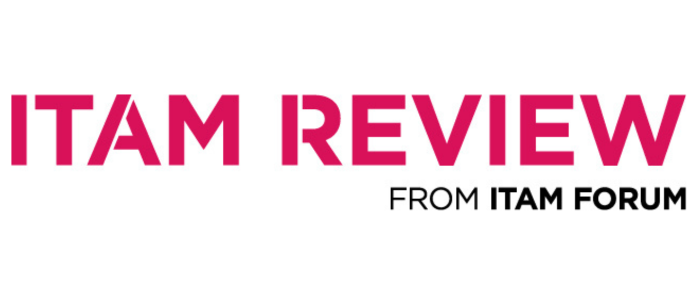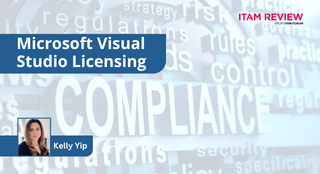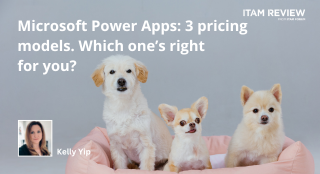Microsoft Services Provider License Agreement (SPLA) Quick Guide
(This article was update on 16 May 2025)
What is SPLA?
The Microsoft Service Provider Licensing Agreement (SPLA) is an agreement designed for service providers and Independent Service Vendors (ISVs) that want to provide hosted applications and Software Services to end customers. The program allows service providers and ISVs to license the latest, eligible Microsoft software products for this purpose, meaning that they are the licensee, not the end customer.
Traditional Microsoft Volume License Agreements do not typically allow service providers the rights to host Microsoft software for third parties, therefore, SPLA is often the only option for this scenario.
How does SPLA work?
SPLA allows service providers to provide services to end customers with the Microsoft licenses included. The SPLA agreement supports a variety of hosting scenarios, typically allowing monthly, pay-as-you-go based licensing, over a three-year agreement term.
For end customers, their agreement will not be with Microsoft. It will be with their SPLA provider, and from their perspective, they’re simply receiving a service and being billed for the consumption/usage of that service. Depending on how the SPLA provider chooses to itemise the billing for their end customers, it may or may not reference Microsoft licenses at all.
It’s worth noting that end-customers cannot utilise SPLA licenses for their on-premise environments. The exception to this is in scenarios whereby the on-premise software is fully managed by the provider themselves.
SPLA Benefits
- Flexible Licensing Needs – SPLA allows providers to scale up or down based on customer demand, avoiding long-term commitments.
- Evaluation and Testing – Providers can test and evaluate products for up to 90 days before offering them as a service to their customers.
- Free Trial – Providers can use software to provide services to customers on a trial basis for up to 60 days.
- Pay-as-You-Go License Model – Pay only for the licenses you make available to your customers each month.
- Current Licenses – All licenses on the SPLA agreement come with New Version Rights, meaning you have the most recent software available to you.
- Outsourcing Options – SPLA allows providers to install Microsoft products on servers managed by an outsourcing company, which can handle datacenter administration and management.
- Cloud – Host applications can utilise Infrastructure as a Service (including Azure).
SPLA Provider Obligations
- High Watermark Rule – SPLA requires providers to report the peak usage for each product during the month, not an average.
- Comply with Service Provider Use Rights (SPUR) – The SPUR details the use rights that apply to a customer’s use of the products licensed via SPLA.
- Monthly Reporting – Providers must submit monthly usage reports to Microsoft, via SPLA resellers, ensuring accurate billing.
- Software Tracking – Providers must maintain records of installations and usage to ensure compliance.
- Technical Support – Providers must offer technical support for Microsoft products they host.
How is SPLA Licenses?
SPLA licenses are subscription based, pay-as-you-go licenses. They are required for direct and indirect end-user access to products. There are a variety of licensing models available depending on the product:
- Subscriber Access License (SAL): License required per user or per device accessing the products. Server licenses are NOT required in addition to a SAL. This is the most common license model.
- Per Core: Servers licensed per core can have unlimited users access the software, with no need for a SAL. This is only available for products with a Core-based licensing model.
- Per Guest/Host Licensing Model: The Host/Guest licensing model divides the licensing requirements into two categories. The host licenses are required for the “host fabric,” the underlying infrastructure. The guest licenses are required for your guest virtual OSEs, running on that infrastructure.
- Per Core/Processor for Host: License the hardware per processor for the host fabric in which an instance can run.
- Per Instance for Guest: License for each virtual instance that runs on the host.
Products Available on SPLA
The Microsoft Service Provider Use Rights document provides further details regarding products available on SPLA.
Per Core Licensing model:
- SQL Server
- Biztalk
- System Center
- Windows Server
- Sharepoint
Per user model (SAL):
- Microsoft Office
- Microsoft Visio
- Microsoft Project
- Remote Desktop Services (RDS)
- Visual Studio
- SQL Server Standard
- System Center
- Exchange/Sharepoint/Skype for business server
Common SPLA Pitfalls
As with any licensing model, licensing SPLA can come with challenges and pitfalls. Common pitfalls include:
- Only counting users who have “used” the product or service. You must instead count all unique users authorised to access your service, regardless of the frequency in which it has been used.
- Not counting the correct number of Remote Desktop Services SALs. RDS SALs are required for direct or indirect access to a graphical user interface. For example, accessing hosted desktop applications, such as Microsoft Office, will require an RDS SAL if the solution is hosted on a Windows Server.
- Not licensing indirect access. Even if users do not directly utilise a Microsoft product, if the hosted product they’re accessing is indirectly utilising server software, licenses are still required.
- Hosting products on Windows Desktop OS. SPLA does NOT support the access to a service delivered through a Windows Desktop OS.
- From October 2025, Service providers will no longer be able to utilise their own SPLA licenses in listed provider environments (Amazon, Google, Alibaba, Microsoft).
Final Considerations
SPLA comes with a number of benefits along with some challenges. To get the most out of SPLA licensing, it’s vital there is close management of authorised users to prevent being charged for the potential access of users (who are not actually utilising the solution). As SPLA is based on the monthly high-watermark, regular monthly management of users is ideal.
It’s worth keeping in mind that the SPLA agreement allows end-customers to inform their providers of any changes to license models on a monthly basis. This can allow for cost optimisation, by enabling end customers to switch to the core based licensing model for server products, once their users reach above a certain level.
Overall, due to its pay-as-you-go model, SPLA can be a great option for providers. And, it allows end customers to purchase solutions “worry-free” without concerning themselves with managing any Microsoft licenses.
Can’t find what you’re looking for?
More from ITAM News & Analysis
-
Broadcom vs Siemens AG - A Brewing Storm
The ongoing legal battle between VMware (under Broadcom ownership) and Siemens is yet another example of why ITAM goes far beyond license compliance and SAM. What might, at first glance, appear to be a licensing dispute, ... -
Shifting Left Together: Embedding ITAM into FinOps Culture
During one of the keynotes at the FinOps X conference in San Diego, JR Storment, Executive Director of the FinOps Foundation, interviewed a senior executive from Salesforce. They discussed the idea of combining the roles of ... -
Addressing the SaaS Data Gap in FinOps FOCUS 2.1
I recently reported on the FinOps Foundation’s inclusion of SaaS and Datacenter in its expanded Cloud+ scope. At that time, I highlighted concerns about getting the myriad SaaS companies to supply FOCUS-compliant billing data. A couple ...
Podcast
ITAM training
Similar Posts
-
Microsoft Visual Studio Licensing Guide: Reduce Risks
(This article was reviewed and updated on 3 July 2025) Visual Studio Licensing Visual Studio subscriptions are licensed Per User with each licensed user able to. “install and use the software on any number of device”. ... -
Broadcom vs Siemens AG - A Brewing Storm
The ongoing legal battle between VMware (under Broadcom ownership) and Siemens is yet another example of why ITAM goes far beyond license compliance and SAM. What might, at first glance, appear to be a licensing dispute, ... -
Microsoft Power Apps: Current Pricing Models Comparison
Back in November 2021, Microsoft made Power Apps available under the pay-as-you-go (PAYG) model, alongside the traditional Per User/Per App options. This PAYG model has gained popularity. It ensures simple rightsizing for Power Apps environments. Here, ... -
Microsoft Q3 Soars as AI and Azure Growth Fuels Market Gains
On the 30th April, Microsoft released its Q3 quarterly earnings report, exceeding expectations and igniting investor optimism. Investors had been keeping a watchful eye on Azure’s Cloud performance after Microsoft’s Q2 Cloud results fell short of ...




